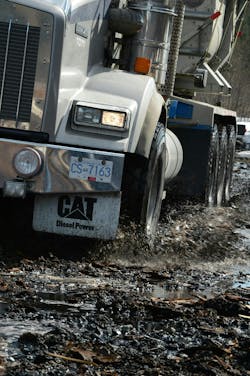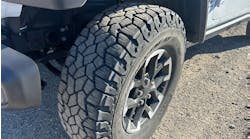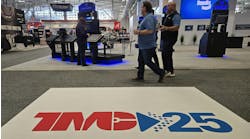Three types of tire buyers
How fleets arrive at their choice of a suitable tire depends a lot on the fleet’s overall approach to business. Valentino Faraone III, CMA/Double-Coin Tire’s regional vice president and new product development manager, breaks fleets into three categories.
“The first group is fleets that use a progressive tire program; they dedicate resources into understanding their total cost of ownership,” he says. “The second group is fleets that value certain features above others and purchase tires based on those features. The selection is often based on their application. And the third group is the acquisition-cost purchaser. These fleets may have limited budgets, and thus dwell on the price of the tires and less on items the previous two groups focus on.”
Fleets in the first group will study multiple products offered by various manufacturers and try to come to a conclusion on which tires provide the best ROI throughout the lifecycle of the tire and casing.
“When we break down all the data and analytics from our research and tire tracking, it comes down to cost-per-32nd over the life of the casing,” stressed Jeremy Gough, associate vice president of national fleet maintenance, at Canadian-based Bison Transport (hands-down the safest fleet in North America). “We watch the miles-to-take-off on the first go-around, but it’s second or third life as a drive tire and then a trailer tire can make or break the spec’ing choice.”
There are other considerations, too, like fuel economy, traction, and driver acceptance, but Gough said if all the other concerns are met it still comes down to durability.
Bison is a big company, with 1,700 power units and more than 9,000 trailers. That’s a lot of tires to track, but they also have the people to do it. After fuel and people, tires are Bison’s largest expense, Gough points out.
“You have to be dialed in,” he asserted. “We have multiple people studying tires day in and day out, including our technicians. They are constantly collecting data on tread depth and tire pressure. It’s really mundane stuff, but critically important to tire life.”
Tracking tires
Ask any fleet manager who has ever tried establishing a tire tracking and analysis program. It’s hard.
First, it’s a long-term project. Tires, good ones, can last more than a year or two. Establishing total miles-to-take-off means you have to run it right down to your normal pull point. Also, since fuel efficiency (rolling resistance) improves as the tread wears; tires are most efficient the day you take them off the truck.
If you’re monitoring fuel economy as well as overall miles-to-take-off, the life cycle fuel economy will be best in the final third of its life. Fuel economy will be its worst when the tire is new. In other words, you have to leave the tire on ‘till the bitter end to get an accurate bead on how it will perform in that category.
Of course, any number of things can happen to a tire over the trial period. Flats, blowouts, curb strikes, road hazards, etc., and somebody also has to track all the fuel consumed by that truck during the course of the test. The possibility of seeing a test through successfully can be fairly slim.
This begs the question, is it even worth trying?
If you’re a fleet like Bison, with the resources to undertake such a program, the answer is yes. If you’re a 20-truck fleet where the dispatcher is also the tire guy and the receptionist, maybe not.
Is traction still king?
Some drivers (even company ones) are pretty particular about their tires. Bison’s Gough seeks driver input on the tires he specs. He’s painfully aware of how difficult it is to find and retain good drivers. So, he doesn’t want his tire spec scaring off good candidates.
“Drivers are not tire experts,” he says. “They have this idea that really gnarly tread—a deep lug tread—is a better traction tire. Generally, it is, but they are usually designed for mud or snow. They are off-road tires.”
He added the importance of training new drivers on the fleet’s tires is also part of crafting a successful tire program.
“Tires are a big part of our onboarding and ongoing driver training programs,” Gough explained. “Like any other technology, we explain to our drivers the benefits of various tread patterns and rubber compounds. That helps to build confidence in the tires they drive on.”
Oklahoma City-based FTC Transportation also solicits driver input on its tire spec and relies on drivers to report good and bad impressions of their tires.
“We get input from our drivers through our driver committee as well as the monthly safety committee meetings on equipment,” said John Shepard, FTC senior director of operations. “We look for feedback before, during, and after any changes are made to ensure we are providing the safest and most sensible solutions for their needs.”
FTC was named an EPA SmartWay “High Performer” in 2024 and is a Best Fleets to Drive For Hall of Fame member.
Like almost everything else in trucking, time has improved tire design and construction. Today, a good all-round drive tire may look more like a steer tire, with tight-packed lugs arranged in patterns that resemble rib tires. Once drivers and fleet owners grasp the fact that such tires do have more than adequate traction due to the tread design and the tread rubber compounds, the spec’ing decision becomes a little clearer.
Still, some tire buyers live with a bunch of ill-conceived notions about tires.
“The classic questions from fleets are often, ‘How many miles will these tires run?’, ‘How much do they cost?’ and ‘Are they retreadable?’” noted Gavin Broussard, Apollo Tires’ head of U.S. commercial tire sales. “However, there are many variables at play depending on the specific needs of the fleet and the segment they operate in.
“Factors such as total cost of ownership, tire availability, and manufacturer’s warranty can have a significant impact on a fleet’s profitability. These considerations often go beyond just mileage and price, making it essential for fleets to evaluate multiple tire brands,” Broussard adds.
To read more about how tire spec'ing and maintenance work together with today's tires, see Part Three of this story.





